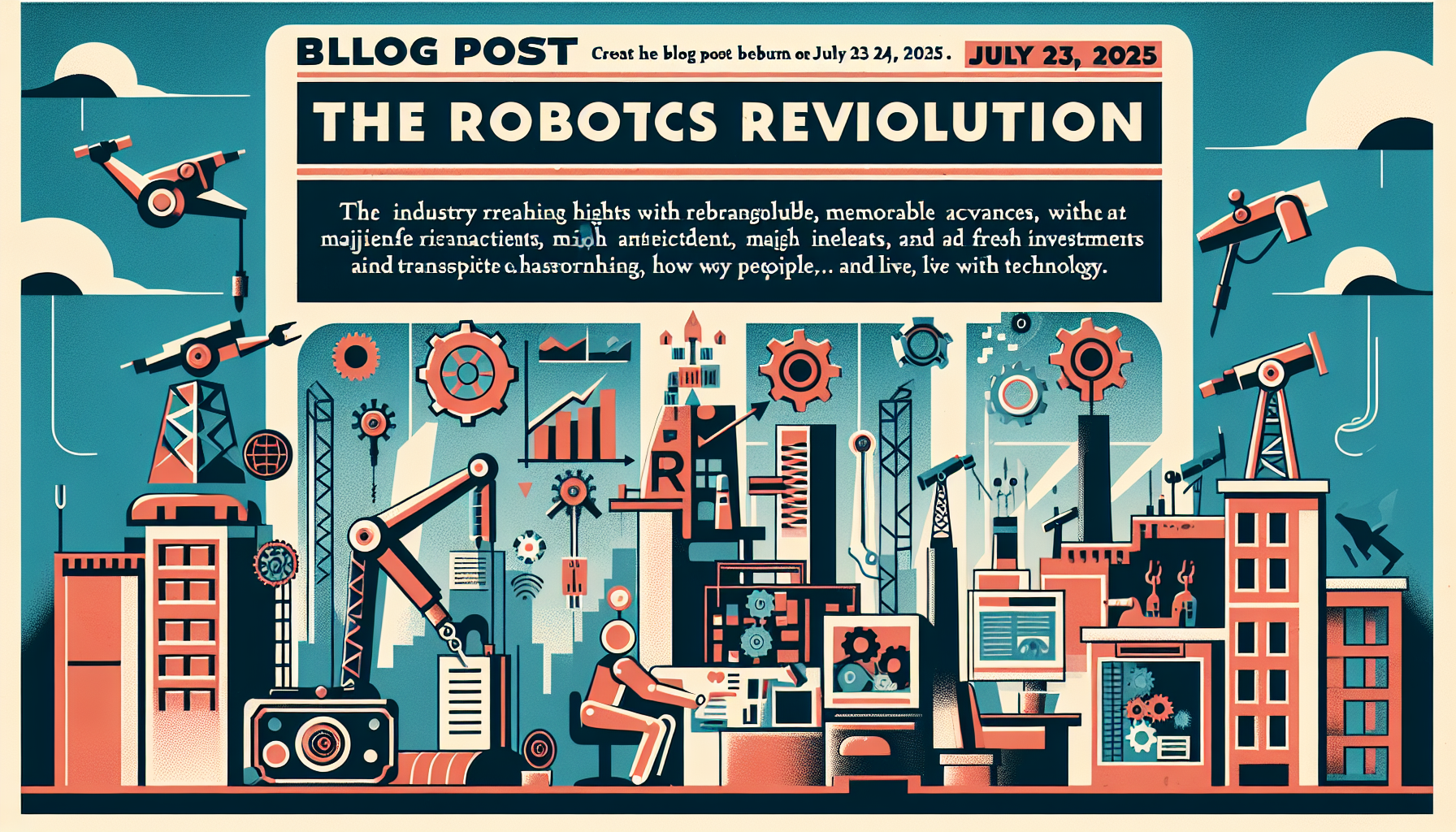On July 23 and 24, 2025, the world witnessed a turning point in robotics. In just two days, the industry reached new heights with remarkable advances, major investments, and fresh ideas. This period became known as the start of a true robotics revolution—one that promises to transform how we work, live, and interact with technology.
Breakthroughs in Robotic Technology
During these days, researchers revealed robotic systems that were far more advanced than those before. These new robots can make sense of their surroundings and adapt quickly, making them much more useful in real-world settings. In factories and warehouses, for example, robots now move heavier goods and work side by side with people, improving both safety and efficiency. Their growing ability to understand speech, recognize objects, and make decisions on their own means they are better equipped to help with complex tasks that once required a human touch.
Government Action and Policy Changes
Recognizing the importance of these advancements, governments around the world responded with bold steps. They pledged billions of dollars to support robotics and artificial intelligence, aiming to secure a leading role in this fast-moving field. Policies were updated to encourage rapid adoption, making it easier for local industries to benefit from robotics. By investing in new infrastructure and education, these initiatives are designed to foster innovation and prepare workforces for the changes ahead.
New Business Innovations
Major technology companies rolled out the next wave of robots, built around the latest artificial intelligence breakthroughs. At the same time, startups broke new ground by introducing robots into areas like sports training and entertainment. These moves show that robotics is no longer limited to big industrial machines—it is now entering everyday life, from interactive exercise coaches to engaging, intelligent toys.
Research Driving Autonomy and Dexterity
In the research world, July 2025 brought breakthroughs that made robots even more capable. New AI systems, such as Google’s Gemini Robotics On-Device, allow robots to see, understand language, and act all at once, directly on the device. This real-time processing means robots can respond more quickly, protect privacy, and reduce reliance on remote servers. Other studies showed that robots are getting much better at learning different tasks using lifelong learning approaches and physics-informed simulations. These advances improved dexterity and success rates, especially for jobs that require careful, human-like movement.
Impact on Society and the Road Ahead
All these developments signal that robotics is weaving itself into the fabric of economic and social life. Robots are not just tools for the factory floor—increasingly, they are found in homes, hospitals, schools, and recreation. Experts have described this moment as the birth of a “robotics revolution,” predicting deep changes in jobs, leisure, and the way people connect with machines and each other.
Context and Further Developments
This period also saw growing excitement and investment from the private sector. For example, SoftBank entered talks to support OpenAI as it expands its focus on robotics. Meanwhile, researchers pushed ahead in other fields, using AI-powered robots to tackle tough problems in healthcare and creating systems where many robots can work together as teams. These efforts show the wide-ranging impact and future promise of robotics and artificial intelligence working together.
A New Era of Collaboration
The events of July 23–24, 2025, mark a clear milestone. Robotics now stands at the forefront of technological change. Robots are more skilled, more autonomous, and more widely used than ever before. Governments and companies alike are investing heavily for the future, while ongoing research pushes the boundaries of what robots can do.
This revolution is set to change countless industries—manufacturing, logistics, sports, entertainment, and more—while reshaping how technology fits into our daily lives. As robots become more capable partners, their impact will only grow, ushering in a new era of collaboration between humans and machines.

Leave a Reply